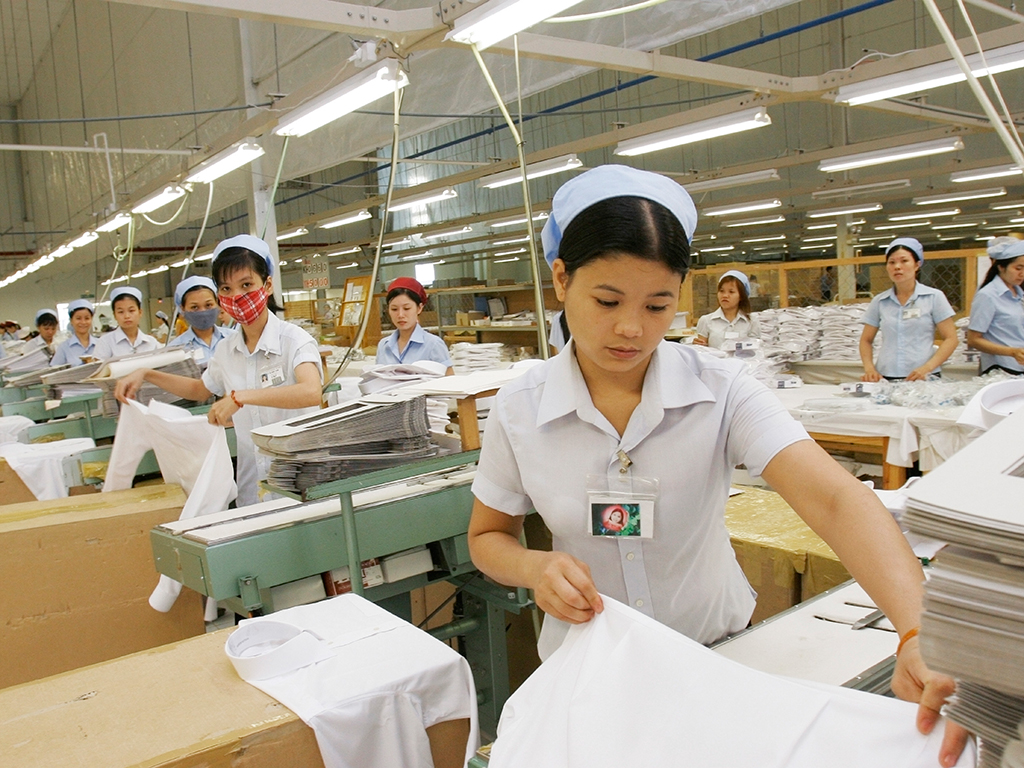Vietnam’s textile industry could be great – with a hand
Vietnam’s growing apparel and textile industry could be stunted unless structural reforms are implemented

Vietnam's textile industry has become one of the world's best. Still, the World Bank has highlighted the need for the country's government to implement structural reforms to allow the sector to fulfil its rich potential
Since the late 1990s, Vietnam’s textile and apparel sectors have shown impressive growth and export revenue. In less than two decades, the country has rapidly risen the ranks to become one of the world’s top ten textile exporters. As a result, the industry plays a significant role in the socioeconomic climate of Vietnam, accounting for approximately 2.3 million jobs, with 80 percent held by women. Government initiatives that encourage international investment have contributed to this recent success, with foreign-invested firms accounting for 60 percent of the industry’s export revenue.
Supporting Vietnamese fashion brands can also strengthen foreign demand
This exponential growth can be largely attributed to the nature of the business, as a small capital investment is required for a short-term profit. This is particularly encouraging for both domestic and international investors, as it presents the opportunity of a fast turnaround with a relatively low level of risk. The country’s bulging labour force also facilitates the growing sector, while lower wages give Vietnam an edge against China – the largest competitor in the global textile industry.
In order to maintain persisting expansion of the textile and clothing industry within Vietnam, several challenges must be confronted. The ‘CMT’ business model, in which Vietnamese factories are provided with the raw materials from foreign buyers, presents the disadvantage of restrictive profit margins for domestic firms. At the same time, productivity levels are relatively low – largely due to under-performing management and a lack of innovation in the sector. Although a workforce with a limited skill set is conducive for low wages, it impedes the possibility of continual growth. It is therefore vital for the government to invest in broadening the skill set of workers, which can also improve production and distribution.
According to a special report by the World Bank about the light manufacturing industry in Vietnam, the government must make a structural transformation in order to continue developing. Currently, apparel production is contracted by foreign companies that provide their own specifications, designs and even equipment. If the sector can mature into developing its own products and styles, a more sustainable long-term strategy can be achieved. This could also present the prospect of value-added products and new streams of foreign investment, as well as raising the viability of a fashion industry in Vietnam. Given a population of 90 million, the opportunities within the domestic market are rife.
Supporting Vietnamese fashion brands can also strengthen foreign demand, as well as encourage competition with other top garment producers in the world, such as Italy, France and Spain. In addition, scope exists for product specialisation, with Vietnamese manufacturers currently exploring the benefits of niche clothing and furnishings. As well as traditional markets, including the EU, US and Japan, the sector is beginning to discover new markets such as the Middle East and Russia. International buyers are always on the search for competitive prices, partnered with good quality and timely delivery. If the apparel and textile industry in Vietnam can uphold these principles, while implementing structural changes and product diversification, growth is set to continue at its current velocity.













